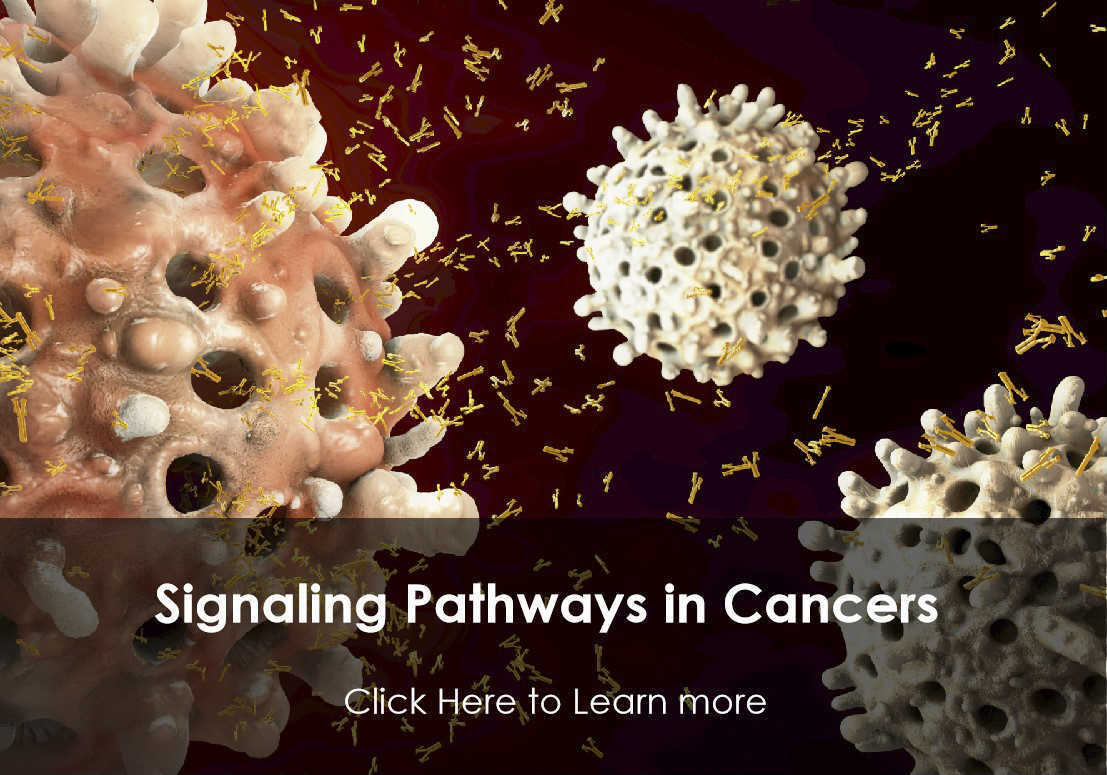PKN2
PKN2 (Protein Kinase N2) is a protein coding gene. Among its related pathways are Cytoskeletal Signaling and Signaling by Rho GTPases. Gene Ontology annotations related to this gene include protein kinase activity.
Full Name
protein kinase N2
Function
PKC-related serine/threonine-protein kinase and Rho/Rac effector protein that participates in specific signal transduction responses in the cell. Plays a role in the regulation of cell cycle progression, actin cytoskeleton assembly, cell migration, cell adhesion, tumor cell invasion and transcription activation signaling processes. Phosphorylates CTTN in hyaluronan-induced astrocytes and hence decreases CTTN ability to associate with filamentous actin. Phosphorylates HDAC5, therefore lead to impair HDAC5 import. Direct RhoA target required for the regulation of the maturation of primordial junctions into apical junction formation in bronchial epithelial cells. Required for G2/M phases of the cell cycle progression and abscission during cytokinesis in a ECT2-dependent manner. Stimulates FYN kinase activity that is required for establishment of skin cell-cell adhesion during keratinocytes differentiation. Regulates epithelial bladder cells speed and direction of movement during cell migration and tumor cell invasion. Inhibits Akt pro-survival-induced kinase activity. Mediates Rho protein-induced transcriptional activation via the c-fos serum response factor (SRF). Involved in the negative regulation of ciliogenesis (PubMed:27104747).
(Microbial infection) Phosphorylates HCV NS5B leading to stimulation of HCV RNA replication.
(Microbial infection) Phosphorylates HCV NS5B leading to stimulation of HCV RNA replication.
Biological Process
Apical junction assemblyManual Assertion Based On ExperimentIMP:UniProtKB
Apoptotic processIEA:UniProtKB-KW
Cell adhesionIEA:UniProtKB-KW
Cell cycleIEA:UniProtKB-KW
Cell divisionIEA:UniProtKB-KW
Cell projection organizationIEA:UniProtKB-KW
Epithelial cell migrationManual Assertion Based On ExperimentIDA:UniProtKB
Intracellular signal transductionManual Assertion Based On ExperimentIBA:GO_Central
Peptidyl-serine phosphorylationManual Assertion Based On ExperimentIBA:GO_Central
Positive regulation of cytokinesisManual Assertion Based On ExperimentIMP:UniProtKB
Positive regulation of mitotic cell cycleManual Assertion Based On ExperimentIMP:UniProtKB
Positive regulation of viral genome replicationManual Assertion Based On ExperimentIMP:AgBase
Protein phosphorylationManual Assertion Based On ExperimentIDA:UniProtKB
Regulation of cell motilityManual Assertion Based On ExperimentIMP:UniProtKB
Signal transductionManual Assertion Based On ExperimentTAS:ProtInc
Apoptotic processIEA:UniProtKB-KW
Cell adhesionIEA:UniProtKB-KW
Cell cycleIEA:UniProtKB-KW
Cell divisionIEA:UniProtKB-KW
Cell projection organizationIEA:UniProtKB-KW
Epithelial cell migrationManual Assertion Based On ExperimentIDA:UniProtKB
Intracellular signal transductionManual Assertion Based On ExperimentIBA:GO_Central
Peptidyl-serine phosphorylationManual Assertion Based On ExperimentIBA:GO_Central
Positive regulation of cytokinesisManual Assertion Based On ExperimentIMP:UniProtKB
Positive regulation of mitotic cell cycleManual Assertion Based On ExperimentIMP:UniProtKB
Positive regulation of viral genome replicationManual Assertion Based On ExperimentIMP:AgBase
Protein phosphorylationManual Assertion Based On ExperimentIDA:UniProtKB
Regulation of cell motilityManual Assertion Based On ExperimentIMP:UniProtKB
Signal transductionManual Assertion Based On ExperimentTAS:ProtInc
Cellular Location
Cytoplasm
Nucleus
Membrane
Cell projection, lamellipodium
Cytoplasm, cytoskeleton
Cleavage furrow
Midbody
Cell junction
Colocalizes with PTPN13 in lamellipodia-like structures, regions of large actin turnover. Accumulates during telophase at the cleavage furrow and concentrates finally around the midbody in cytokinesis. Recruited to nascent cell-cell contacts at the apical surface of cells. In the course of viral infection, colocalizes with HCV NS5B at perinuclear region in the cytoplasm.
Nucleus
Membrane
Cell projection, lamellipodium
Cytoplasm, cytoskeleton
Cleavage furrow
Midbody
Cell junction
Colocalizes with PTPN13 in lamellipodia-like structures, regions of large actin turnover. Accumulates during telophase at the cleavage furrow and concentrates finally around the midbody in cytokinesis. Recruited to nascent cell-cell contacts at the apical surface of cells. In the course of viral infection, colocalizes with HCV NS5B at perinuclear region in the cytoplasm.
PTM
Autophosphorylated. Phosphorylated during mitosis. Phosphorylated by CDK10 (PubMed:27104747).
Activated by limited proteolysis with trypsin (By similarity).
Proteolytically cleaved by caspase-3 during the induction of apoptotic cell death.
Activated by limited proteolysis with trypsin (By similarity).
Proteolytically cleaved by caspase-3 during the induction of apoptotic cell death.
View more
Anti-PKN2 antibodies
+ Filters
 Loading...
Loading...
Target: PKN2
Host: Rabbit
Antibody Isotype: IgG
Specificity: Human, Monkey, Cattle, Pig
Clone: D10A10
Application*: WB, IP
Target: PKN2
Host: Mouse
Antibody Isotype: IgG1, κ
Specificity: Human
Clone: 3A7
Application*: E, IF, WB
Target: PKN2
Host: Mouse
Antibody Isotype: IgG1
Specificity: Human, Mouse, Monkey, Rat
Clone: 1D1
Application*: E, F, IH, P, WB
Target: PKN2
Host: Rabbit
Antibody Isotype: IgG
Specificity: Human
Clone: 20A8
Application*: E, WB, IH, IF, F
Target: PKN2
Host: Rabbit
Antibody Isotype: IgG
Specificity: Human
Clone: 11H3
Application*: E, WB, F
Target: PKN2
Host: Mouse
Antibody Isotype: IgG
Specificity: Human, Mouse, Rat, Monkey
Clone: CBT1062
Application*: WB, P, IF, F, E
More Infomation
Hot products 
-
Rat Anti-ADGRE4 Recombinant Antibody (V2-160163) (CBMAB-F0011-CQ)

-
Mouse Anti-dsDNA Recombinant Antibody (22) (CBMAB-AP1954LY)

-
Mouse Anti-COL1A2 Recombinant Antibody (CF108) (V2LY-1206-LY626)

-
Mouse Anti-BRCA2 Recombinant Antibody (CBYY-0790) (CBMAB-0793-YY)

-
Mouse Anti-AKT1 (Phosphorylated S473) Recombinant Antibody (V2-505430) (PTM-CBMAB-0067LY)

-
Human Anti-SARS-CoV-2 S1 Monoclonal Antibody (CBFYR-0120) (CBMAB-R0120-FY)

-
Mouse Anti-CD83 Recombinant Antibody (HB15) (CBMAB-C1765-CQ)

-
Mouse Anti-CD24 Recombinant Antibody (SN3) (CBMAB-C1037-CQ)

-
Rat Anti-AChR Recombinant Antibody (V2-12500) (CBMAB-0990-CN)

-
Mouse Anti-CD33 Recombinant Antibody (P67.6) (CBMAB-C10189-LY)

-
Mouse Anti-CTCF Recombinant Antibody (CBFYC-2371) (CBMAB-C2443-FY)

-
Rabbit Anti-ENO2 Recombinant Antibody (BA0013) (CBMAB-0272CQ)

-
Mouse Anti-ESR1 Recombinant Antibody (Y31) (CBMAB-1208-YC)

-
Mouse Anti-EGR1 Recombinant Antibody (CBWJZ-100) (CBMAB-Z0289-WJ)

-
Mouse Anti-ARHGDIA Recombinant Antibody (CBCNA-009) (CBMAB-R0415-CN)

-
Mouse Anti-ADAM12 Recombinant Antibody (V2-179752) (CBMAB-A1114-YC)

-
Mouse Anti-ALOX5 Recombinant Antibody (33) (CBMAB-1890CQ)

-
Mouse Anti-APP Recombinant Antibody (5C2A1) (CBMAB-A3314-YC)

-
Mouse Anti-CCL18 Recombinant Antibody (64507) (CBMAB-C7910-LY)

-
Mouse Anti-ELAVL4 Recombinant Antibody (6B9) (CBMAB-1132-YC)

For Research Use Only. Not For Clinical Use.
(P): Predicted
* Abbreviations
- AActivation
- AGAgonist
- APApoptosis
- BBlocking
- BABioassay
- BIBioimaging
- CImmunohistochemistry-Frozen Sections
- CIChromatin Immunoprecipitation
- CTCytotoxicity
- CSCostimulation
- DDepletion
- DBDot Blot
- EELISA
- ECELISA(Cap)
- EDELISA(Det)
- ESELISpot
- EMElectron Microscopy
- FFlow Cytometry
- FNFunction Assay
- GSGel Supershift
- IInhibition
- IAEnzyme Immunoassay
- ICImmunocytochemistry
- IDImmunodiffusion
- IEImmunoelectrophoresis
- IFImmunofluorescence
- IGImmunochromatography
- IHImmunohistochemistry
- IMImmunomicroscopy
- IOImmunoassay
- IPImmunoprecipitation
- ISIntracellular Staining for Flow Cytometry
- LALuminex Assay
- LFLateral Flow Immunoassay
- MMicroarray
- MCMass Cytometry/CyTOF
- MDMeDIP
- MSElectrophoretic Mobility Shift Assay
- NNeutralization
- PImmunohistologyp-Paraffin Sections
- PAPeptide Array
- PEPeptide ELISA
- PLProximity Ligation Assay
- RRadioimmunoassay
- SStimulation
- SESandwich ELISA
- SHIn situ hybridization
- TCTissue Culture
- WBWestern Blot

Online Inquiry







